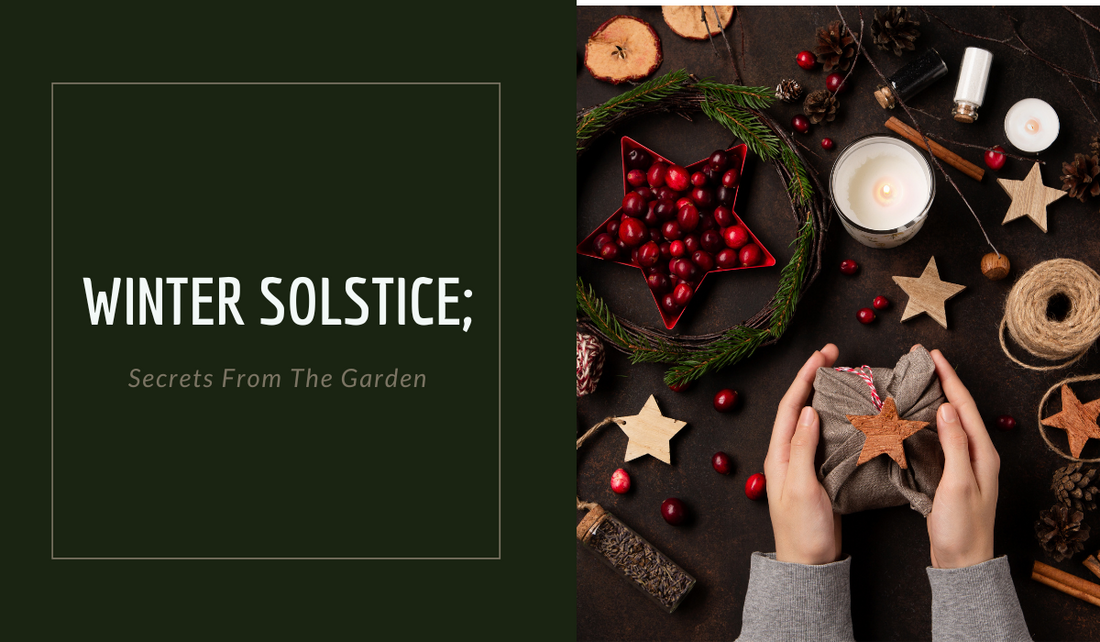
WINTER SOLSTICE

Maumee River, 2022
Winter Solstice; the original Holiday?
Solstizio (solstice) derives from Latin, sol, meaning sun, and sistere, meaning to stand still. Each passing day after the winter solstice, represents the sun “gaining strength” as the days progressively get longer.
The December solstice occurs around December 20th or 21st. In the Northern Hemisphere, the North Pole is tilted about 23.4° away from the Sun. Because the Sun’s rays are shifted southward from the Equator by the same amount, the vertical mid-day rays are directly overhead at the Tropic of Capricorn.
At the moment of solstice, less than half of the Northern Hemisphere is in sunlight, making this the shortest day of the year and marking the start of winter.
The opposite occurs in the Southern Hemisphere, which tilts toward the Sun and receives abundant sunlight. In the Southern Hemisphere, the December solstice marks the longest day of the year and the onset of summer.
Ancient Winter Solstice Traditions
Since pre- Christian celebrations, the winter solstice has been a significant time of year in many cultures and has been marked by festivals and rituals. It marked the symbolic death and rebirth of the Sun; the gradual waning of daylight hours is reversed and begins to grow again.
Some ancient monuments such as Newgrange, Stonehenge, and Cahokia Woodhenge are aligned with the sunrise or sunset on the winter solstice.

Winter Solstice: Ndocciata Torchlight Parade; Italy
The origins of the 'Ndocciata date back to the pre-Roman era, when these lands were inhabited by the famous Samnite tribe. The celebration took place concurrently with the winter solstice of December 21st, and he saw a particular role played by the primordial element of fire, which has always been full of symbolism.
The transport and use of fire in the pagan rites that later gave rise to the 'Ndocciata was possible by means of large torches. These came calls precisely 'ndocce in the local dialect. They have a fan shape and are obtained, then as now, from the wood of the silver firs that grow in the nearby wood of Montecastelbarone.
With the affirmation of Christianity in Roman and post-Roman society, the rite of the 'Ndocciata took on a new religious interpretation. After the eighteenth century it was passed on to peasants, who used torches to get around towards the churches on Christmas night. From here comes the traditional procession with the 'ndocce as a typical event of the Christmas period.
‘Sicilian Stonehenge’ Gela, Italy

Recently discovered in 2016 and still not open to the public. The Italian "Stonehenge" is an exquisite site to see. Locals share their stories through folklore, to them, this was Sacred site, where our ancestors would celebrate the rebirth of the Sun.
Archaeologists weren’t looking for the ancient Italian ‘Stonehenge’ when they made the discovery.
Instead, the team was conducting surveys of WWII-era bunkers along a state road that connects Gela and Catania.
They stumbled on the man-made megalith 8 kilometers (5 miles) outside of Gela on Nov 30, 2016, near the prehistoric Grotticelle necropolis.
Upon observing the unusual structure, they hypothesized that a large hole bored into a 23-foot-tall stone may have been used like a calendar based on the position of the sun.
To test this, they returned to the site during the winter solstice in December with a compass, cameras, and a GPS-equipped drone with a video camera mounted on it.
The remarkable footage captured on December 23 shows how the sun slowly rises into place, eventually reaching a point where it appears to be directly behind the hole to shine perfectly through it.
‘It appeared clear to me that we were dealing with a deliberate, man-made hole,’ archaeologist Giuseppe La Spina
An experiment conducted during winter solstice with a compass, camera and drone confirmed that the object was in fact a calendar stone.

ALL CREDIT TO Giuseppe La Spina
Winter Solstice: La Befana; Italy

La Befana; Known as the ‘good witch of Christmas’, La Befana presides over the feast of the Epiphany on January 6th. In fact, her name comes from the Italian word for the Epiphany; ‘epifania’. Making her journey on January 5th, she rides atop a broom and climbs down the chimney of homes to deliver presents to the children inside. Well behaved children find colorful candies in their stockings, while the misbehaved ones find coal – but don’t worry, it’s candy coal (edible and sweet!)
La Befana’s story dates back to pagan times, and is closely connected with the Nativity story. On their way to see the baby Jesus, the three Magi (wise-men) stopped into the old woman’s house looking for refuge from a cold night. Like a good host, she offered them food and shelter. As they chatted they asked her to join them on their journey but, with too much housework to do, the old woman declined.
Shortly after they left she realized her mistake. Filling up a basket with various gifts, she raced off in hot pursuit but even though she followed the same star, she was never able to find the baby Jesus. Today, she continues to search houses for the child, leaving gifts in her wake.
Traditionally, the children leave food for La Befana's spirit and their parents leave wine (preferably red) to help her on her way.
In some parts of Italy, the solstice is considered more of a New Year’s Eve than December 31st because it symbolizes rebirth.

Winter Solstice, Germany
The formation, known as the Stonehenge of Germany, is estimated to be around 4,300 years old and was discovered in 1999 in the forest near the banks of the Elbe River. Made of wood, the archaeological wonder has not withstood the test of time well and has since been entirely reconstructed at a cost of 2 million euros ($2.27 million).
Comprising an arrangement of rings seven layers deep, the configuration is thought to have been of great significance from the 21st to 23rd centuries BC - the time in which the world was transitioning from the Neolithic period to the Bronze Age.
The pre-historic site is presumed to have served as a "power center" for our ancestors to worship and pray.
Carvings found in the wood that are thought to symbolize the cosmos suggest the area was of importance in religious ceremonies and perhaps played a significant role in offerings.
According to Viking lore, the northern Germans and Scandinavians celebrated Yule, a pagan religious festival heralding the arrival of the winter solstice from mid-December to early January. During this time, many believed that Odin, disguised in a long blue-hooded cloak, would travel to earth on his eight-legged horse, to observe homesteaders gathered around the campfires to see how content the people were and for those in need of food, he left his gifts of bread and disappeared.
As traditions grew over time, the children of these lands would anticipate the arrival of gift-bearing Odin. The children would fill their "stockings" with straw, carrots or sugar and place them near the fireplace so that Sleipnir (Odin's eight-legged horse) could come down to eat during his midnight rides. Odin would then reward these kind children by replacing the food with gifts and candy treats inside the boots.
By now, you can see that many of those traditions transcended time with changes: the eight-legged horse became eight tiny reindeer; the boots by the fireplaces would eventually become stockings “hung by the chimney with care;” and the food and candy, well those became to toys.
Winter Solstice Lantern Festival, Vancouver

To honor the many cultural traditions that celebrate the winter solstice, Vancouver’s Secret Lantern Society created the city’s Solstice Lantern Festival. Participants can attend workshops to create their lanterns. On the night of the solstice, participants march throughout the city with their lanterns, bringing the light. Attendees can also try to find their way through the Light, a maze of 600 candles that invites visitors to let go of old thoughts and find new possibilities for the coming year.
Click on the image below to be directed to The Secret Lantern Society's website.

Winter Solstice Traditions: Ireland

Newgrange: built during the Neolithic Period, around 3200 BC, making it older than Stonehenge and the Egyptian pyramids
The 5,200-year-old Newgrange passage tomb and ancient temple are aligned to the winter solstice: A small opening above the entrance fills with light on several sunrises surrounding the solstice, gradually extending throughout the chamber to illuminate it. The dramatic effect lasts for 17 minutes. Locals say that it marks the beginning of a new year and the triumph of light over darkness. Many gather in hopes for a chance at a "lottery drawing" to be inside the temple at the moment of the sunrise. The "lottery" consists of 30,000 tickets being sold, yet only 50 people will be "chosen" to go inside, the rest will gather outside the temple.
Winter Solstice Traditions: Toji, Japan

The winter solstice in Japan, called Toji, has a few interesting customs associated with it. Traditionally, a winter squash called kabocha is eaten, one of only a few crops that would have been available in days of old. A hot bath with yuzu citrus fruits is believed to refresh body and spirit, ward off illness, and soothe dry winter skin.
Winter Solstice: Stonehenge

England’s famous Stonehenge lures thousands of visitors during the summer and winter solstices. Revelers gather at the prehistoric site of ancient stones in Wiltshire to sing, dance, play instruments, kiss the stones and do yoga as they wait for the sun to rise. The iconic Stonehenge is known for its precise alignment with the sun’s movement and may have been a sacred place of worship and celebration for solstices for thousands of years, according to English Heritage, which manages the popular destination.
ALL PHOTOS ARE PUBLIC DOMAIN, EXCEPT WHERE OTHERWISE STATED. PHOTOS ARE FOR EDUCATIONAL PURPOSES ONLY. I DO NOT PROFIT OFF THE USE OF THESE PHOTOS.
